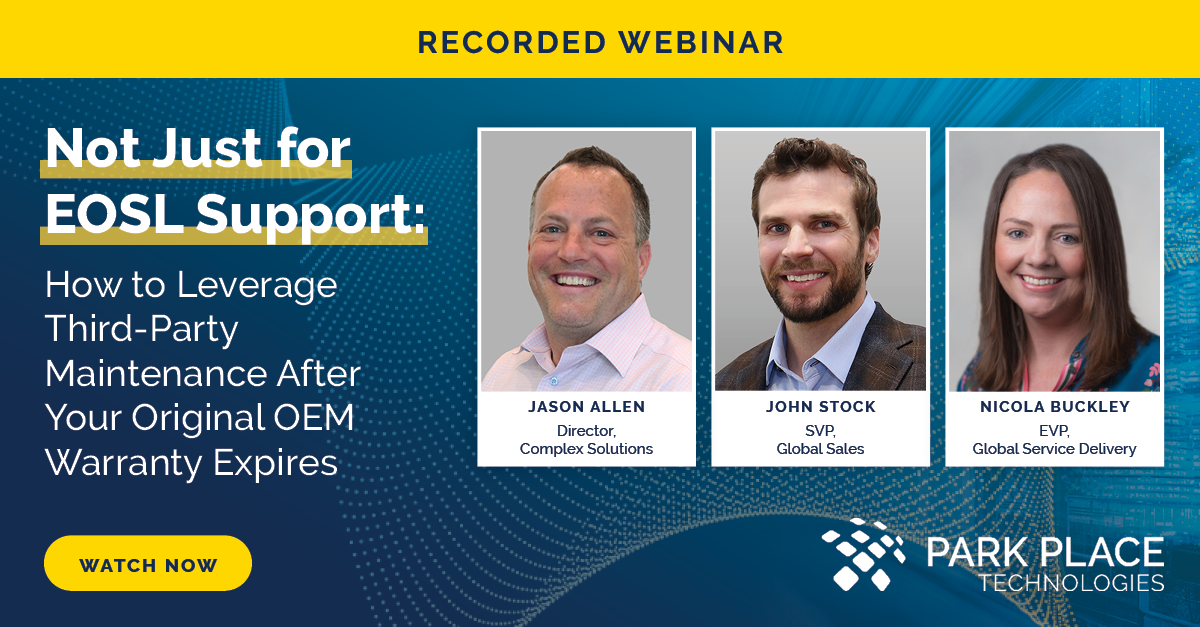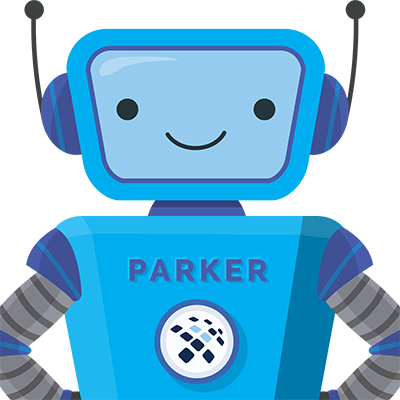QUIZ: Test Your Knowledge of Data Center Terminology
Park Place Hardware Maintenance
There are a plethora of phrases/acronyms that anyone working in or around a data center should be familiar with. But frankly, data center managers toss around some pretty odd terminology! And with each passing year of technological innovation, data center verbiage only seems to get increasingly complex. We want our clients to stay informed on the latest as well as the most basic phrases, so you’re never at a disadvantage.
From industry protocol to basic data center components, this quiz from SearchDataCenter.com will either confirm your knowledge or provide some much-needed clarity. Be sure to take the quiz here, or simply scroll to the bottom for the completed assessment. Then, check out our list of data center terminology below for some common phrases that weren’t covered in the quiz.
Data Center Terms You Should Know
- Blades: modular stripped-down servers designed for space consolidation and quick maintenance. In a conventional rack, hundreds of blades can fit in the space of dozens of standard servers.
- Cluster(s): are networked groups of servers. Clusters are useful for applications that require multiple servers or storage working in tandem.
- Containers: walled-off sections of your operating system reserved for specific applications. Containers are often used in virtual operating systems.
- Downtime: a period of time, or a percentage of a time span, that a system is unavailable or offline. This is usually a result of the system failing to function because of an unplanned event, or because of routine maintenance.Learn more about reducing network downtime today!
- Flash: a storage device that stores persistent data on nonvolatile solid-state memory chips. Unlike spinning electromechanical disks, like hard disk drives, flash drives have no moving parts.
- Hybrid Clouds: systems where one or more public cloud services are combined with your own data center resources into a single virtually managed environment.
- Hyper-converged infrastructure (HCI): a software-defined IT infrastructure that virtualizes all the elements of conventional “hardware-defined” systems. HCI includes, at a minimum, virtualized computing, software-defined storage, and virtualized networking. The “hyper” in hyperconvergence comes from hypervisor – the server virtualization component of the solution.
- Load: the demand placed on a system, typically used to describe the electrical demand on the electrical supply system or the cooling demand on the cooling system.
- Node: a widely used term in information technology that may refer to devices or data points on a larger network. Devices such as a personal computer, cell phone, or printer are considered nodes. Within the context of the Internet, a node is anything that has an IP address.
- OpenStack: a free and open-source software platform for cloud computing, deployed mostly to underpin private or public cloud Infrastructure-as-a Service (IaaS).
- PDU: power distribution unit. Sometimes this term is used in reference to your data center’s electrical system, but more commonly it means the power system inside a rack.
- PUE: power usage effectiveness. It’s an industry standard that measures the ratio of energy used to energy available. Perfect PUE would be 1, but most modern data centers have PUE of about 1.2 – 1.4. Anything above 1.5 means you should be looking for energy improvements.
- Scalability: the ability for the required infrastructure to be enlarged or handle increased capacity input without efficiency or reliability being compromised.
- Software-defined: the art of separating your network from your hardware. The networks can be dispersed or hybrids.Learn more about the benefits of SD-WAN in our recent blog post.
- Tiers: as defined by the Uptime Institute, tiers certify four levels of data centers. From the Uptime Institute’s website: Tier I is the most basic classification, and Tier IV is the most fault-tolerant.Learn more about data center tiers today!
- Virtualization: a framework or methodology of dividing the resources of a computer into multiple execution environments.Learn more about the difference between physical and virtual servers today!
At Park Place Technologies, our attentive service representatives are highly knowledgeable on data center terminology old and new, and collaborate closely with our network of certified engineers. We’ve seen it all before, so you can be confident you’re receiving educated and experienced answers to questions about your data center equipment.
Data Center Terminology Quiz Answers
- A blade server allows for more processing power in less rack space, simplifying cabling and reducing power consumption.
- A multi-core processor is an integrated circuit (IC) to which two or more processors have been attached for enhanced performance, reduced power consumption, and more efficient simultaneous processing of multiple tasks.
- The intention of server virtualization is to spare the user from having to understand and manage complicated details of server resources while increasing resource sharing and utilization and maintaining the capacity to expand later.
- In a computing context, ambient temperature is the air temperature of any environment where computers and related equipment are kept.
- OLTP (online transaction processing) is a class of program that facilitates and manages transaction-oriented applications, typically for data entry and retrieval transactions in a number of industries, including banking, airlines, mail order, and supermarkets.
- Sometimes referred to as a virtualization manager, a hypervisor is a program that allows multiple operating systems, which can include different operating systems or multiple instances of the same operating system, to share a single hardware processor.
- In building construction, a plenum (from Latin meaning full) is a separate space provided for air circulation for heating, ventilation, and air-conditioning (sometimes referred to as HVAC) and typically provided in the space between the structural ceiling and a drop-down ceiling.
- The United Kingdom’s Central Computer and Telecommunications Agency (CCTA) created the ITIL (Information Technology Infrastructure Library) in response to the growing dependence on information technology to meet business needs and goals.
- Service-oriented architecture (SOA) defines how two computing entities, such as programs, interact in such a way as to enable one entity to perform a unit of work on behalf of another entity.
- TIA-942 is a standard developed by the Telecommunications Industry Association to define guidelines for planning and building data centers, particularly with regard to cabling systems and network design. The standard deals with both copper and fiber optic media.
- A common use of distributed computing is to load balance traffic on high-traffic websites.
- A computer room air conditioning unit (CRAC) is a device that monitors and maintains the temperature, air distribution and humidity in a network room or data center.
- SAS 70 (Statement on Auditing Standards No. 70) defines the standards an auditor must employ in order to assess the contracted internal controls of a service organization.
- A 64-bit processor is a microprocessor with a word size of 64 bits, a requirement for memory and data intensive applications such as computer-aided design (CAD) applications, database management systems, technical and scientific applications, and high-performance servers.
- Typically, a Disaster Recovery Plan (DRP) involves an analysis of business processes and continuity needs; it may also include a significant focus on disaster prevention.
- Alien Crosstalk (AXT) arises from multiple signals, and includes mixing products in which phantom signals at innumerable sum and difference frequencies blend with the originating signals.
- Utility Computing is a service provisioning model in which a service provider makes computing resources and infrastructure management available to the customer as needed, and charges them for specific usage rather than a flat rate.
- ASHRAE (American Society of Heating, Refrigerating, and Air-Conditioning Engineers) is an organization devoted to the advancement of indoor-environment-control technology in the heating, ventilation, and air conditioning (HVAC) industry.
- In computing and especially in enterprise data centers, HVAC (heating, ventilation, and air conditioning) systems control the ambient environment (temperature, humidity, air flow, and air filtering) and must be planned for and operated along with other data center components such as computing hardware, cabling, data storage, fire protection, physical security systems and power.
- An uninterruptible power supply (UPS) is a device that allows your computer to keep running for a short time when the primary power source is lost. It also provides protection from power surges.



